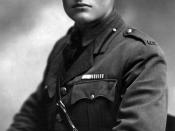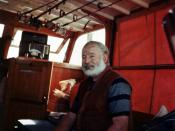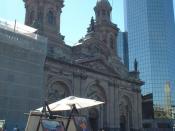Transition, Ritual and Rites of Passage in Ernest Hemingway's The Old Man and the Sea
The term threshold evokes images of entering and departing, crossing and changing. It marks the point at which choices and decisions must be made in order to proceed. In this paper I intend to investigate the symbolic meaning of threshold as a position of growth for the characters in the novel The Old Man and the Sea by Ernest Hemingway, and for them to successfully complete the rite of passage. A number of anthropological studies conducted by Arnold Van Gennep, Victor Turner and Edmund Burke's model of the sublime, have provided insight into the rite of passage; that is constructed of separation, threshold and incorporation. The motif of the rite of passage serves as a description of characters that face considerable changes in their lives. I will also demonstrate how the threshold provides insight into the character's actions and conflicts faced .
Hemingway's novel provides a point of investigation through anthropological interpretation because it show great concerns to the questions of identity, personal growth and liberation from social restrictions.
Anthropological theorist Van Gennep argues that the passage or change is a complex process. Van Gennep investigated the changes in the lives and status of people, culture and religion or the related events connected to change. Van Gennep distinguishes between three different types of change in the life of a person: separation, transition and incorporation. Van Gennep shows special interest in the transitional stage, just as Hemingway does with Santiago. In this period Santiago is in between his former and future social position. Threshold can be interpreted as a symbol of division, which determines the socially structured notion of self and other. This is the point of passage, which stands for change: one can...


